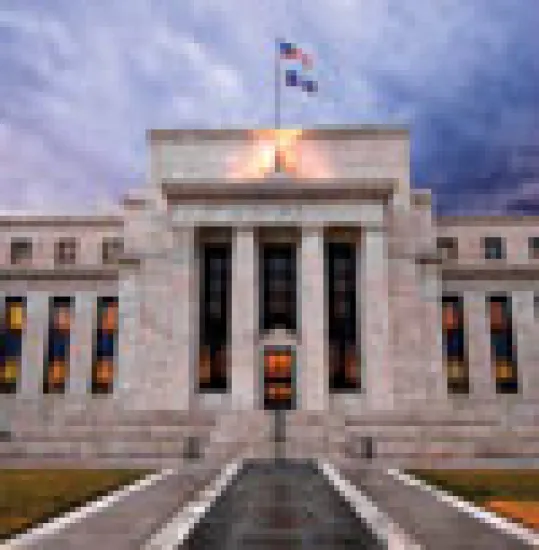Despite the U.S. government’s efforts to convince investors and the public that it won’t nationalize major banks, the Federal Reserve Board’s decision to subject lenders to stress tests could be a milestone along that path. Given the severity of the economic crisis — and that the government decides what constitutes a passing grade — federal officials “are going to be pulled into it one way or another,” asserts Simon Johnson, a professor at the MIT Sloan School of Management and a former economic counselor and director of the research department at the International Monetary Fund.
Bank nationalization in the U.S. is inevitable if global markets continue to deteriorate, taking down such industry sectors as insurance and causing credit spreads to widen even further, Johnson explains. “In a crisis situation, if things go wrong all at once, the only option becomes nationalization.”
The stress tests, which are supposed to be completed by April, may facilitate nationalization. Nineteen of the country’s largest banks are being tested now to gauge how they will hold up if the U.S. economy deteriorates further — in particular, if home values drop an additional 22 percent and unemployment rises to 10.3 percent by 2010. Banks that fail the test will have to bulk up by raising money in the capital markets. The U.S. government will buy mandatory convertible preferred shares of any bank that can’t raise private funds within six months, or it will convert its existing holdings of preferred into common stock, to become a major shareholder.
The Fed’s tests will focus on tangible common equity. Unlike the tier-1 equity capital ratio, which compares common equity, preferred shares and retained earnings to assets, TCE measures only common stock. In the event of a bankruptcy, investors who hold that equity are wiped out first. The Fed’s test is designed to measure whether the capital cushion in place to protect these first-loss positions is sufficient.
Passing these tests will be tough, thanks to years of weak risk management. According to a Fed official who declined to be identified, only two U.S. banks had risk management systems that detected the looming financial crisis as far back as the summer of 2006. The official also notes that most risk systems focus too narrowly on specific business units, rather than on the health of the entire bank.
Who’s vulnerable? Citigroup isn’t out of the woods yet, even after multiple rounds of federal assistance. On February 27 the government announced its third infusion of funding into the embattled bank and agreed to convert up to $25 billion of preferred stock into common stock at $3.25 a share, increasing the taxpayers’ stake to 36 percent. Citi CFO Gary Crittenden says the bank will be in a much stronger position after the government’s holding converts to common stock.
But the Fed still needs to determine what constitutes a passing grade on the stress test. If it wants to see a minimum ratio of TCE to risk-weighted assets of 3 percent, then most banks should be fine. “If, on the other hand, the government is looking for 7 percent, for example, then probably everyone will have to raise capital,” Crittenden tells Institutional Investor.
Yet even as the economic meltdown continues, government officials insist that bank nationalization isn’t imminent. On March 2, Federal Deposit Insurance Corp. chairwoman Sheila Bair said international financial conglomerates would not be taken over by the U.S. government. “Based on where we stand today, I would be surprised if the FDIC had to step in as conservator or receiver of a large, systemically important institution,” she told delegates at the Institute of International Bankers conference in Washington, adding that “most institutions remain in sound financial condition.”
Not according to bank stress analysis by Torrance, California–based consulting firm Institutional Risk Analytics. On March 1 it released U.S. banking industry stress ratings that show that average industry stress rose 15 percent during the third quarter of 2008, to 1.77 points, where 1.0 point represents 1995 levels as a baseline year reflecting prudent risk management. Using FDIC data, the ratings factor in profitability, lending default experience, capital adequacy, loan and unused commitment exposure and operational efficiency. For the fourth quarter, Citigroup’s IRA banking stress index level was 21.5 points — far higher than that of other major U.S. banks and a revelation that IRA founder Christopher Whalen likened to “putting down the family dog.” Bank of America Corp. came in at 1.16 points, and JPMorgan Chase & Co.’s at 1.3 points.
“The degradation of Citi is sad to see,” Whalen tells II. “It’s not only because of its low return on equity, but its charge-offs and efficiency problems — those levels are typically where banks are resolved.”
Some market participants say a one-size-fits-all approach to testing banks’ vulnerabilities is flawed, because it’s the bankers who make the majority of assumptions about how their securities’ mark-to-market values will be affected in each scenario. “Stress tests rely on judgment, and whenever you need to make a judgment, you can’t uniformly apply it as a rule to an entire industry,” says Till Guldimann, who led the team that created JPMorgan’s first risk management systems and is now vice chairman at Sungard Data Systems, a Wayne, Pennsylvania–based technology firm. “Don’t expect the government to measure stuff that management can’t on its own.” Flawed or not, the tests may be the first of many adjustments banks accept in the era of the bailout.






